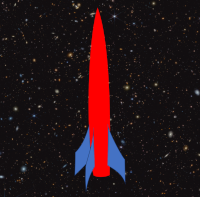
 |
Eager Space | Videos by Alpha | Videos by Date | All Video Text | Support | Community | About |
|---|
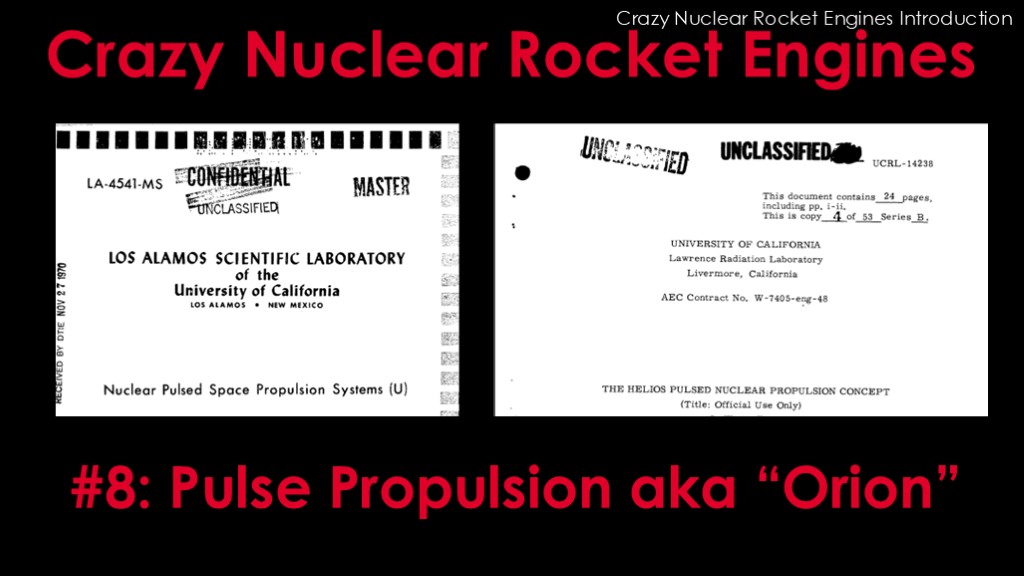
Welcome to crazy nuclear rocket engines #8 - pulse propulsion, otherwise known as "orion".
Which is a great example of the old saying "If all you have is a hammer, everything looks like a nail".
I've included the title pages of two different documents that explore this concept, just to show that it wasn't just a crazy idea somebody came up with, it was a crazy idea that many people researched and discussed seriously.
This would be a great time to watch the introduction if you haven't already.
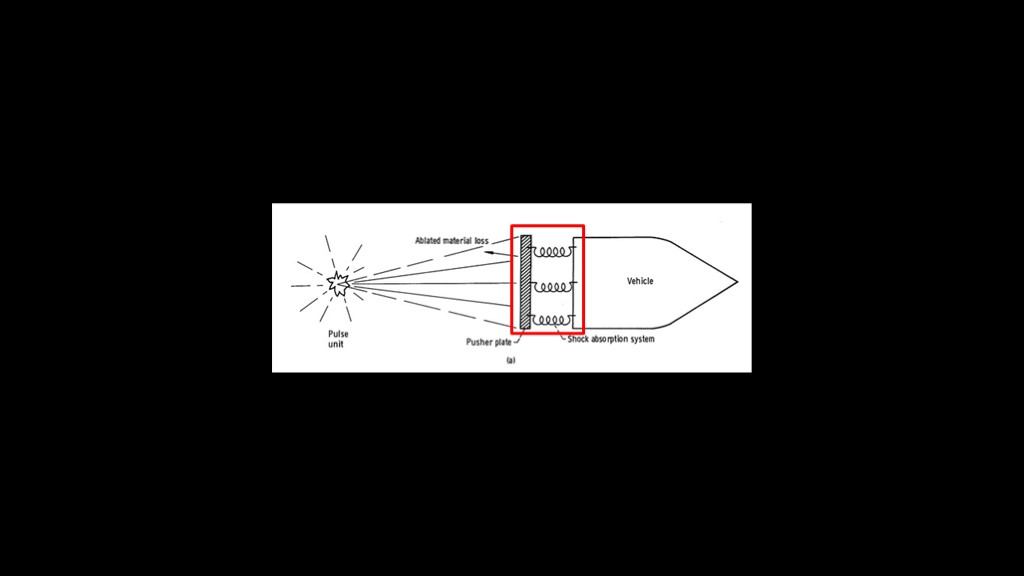
The concept is pretty simple.
You take whatever vehicle you want to move, and at the bottom you attach a big flat pusher plate, connecting it to the vehicle with some big shock absorbers.
Then you set off a series of explosions near the pusher plate, and the shock wave from the explosion hits the pusher plate and moves it forward, and that moves the whole vehicle forward.
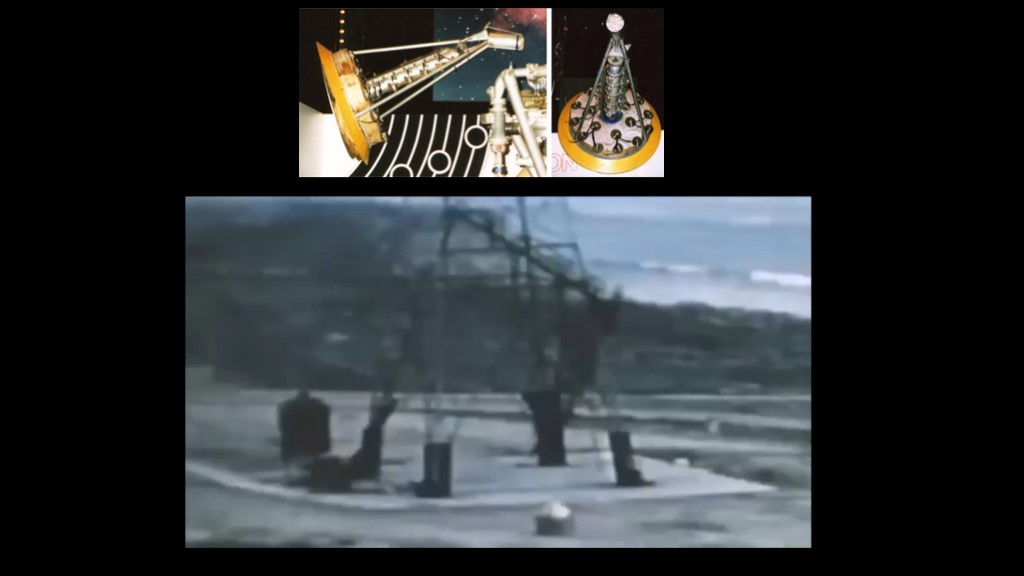
Here's an example, using a test vehicle that holds 5 explosive charges in the central tube.
Let's watch that again. In the second series, you can see the explosives being dropped out of the vehicle before they explode.
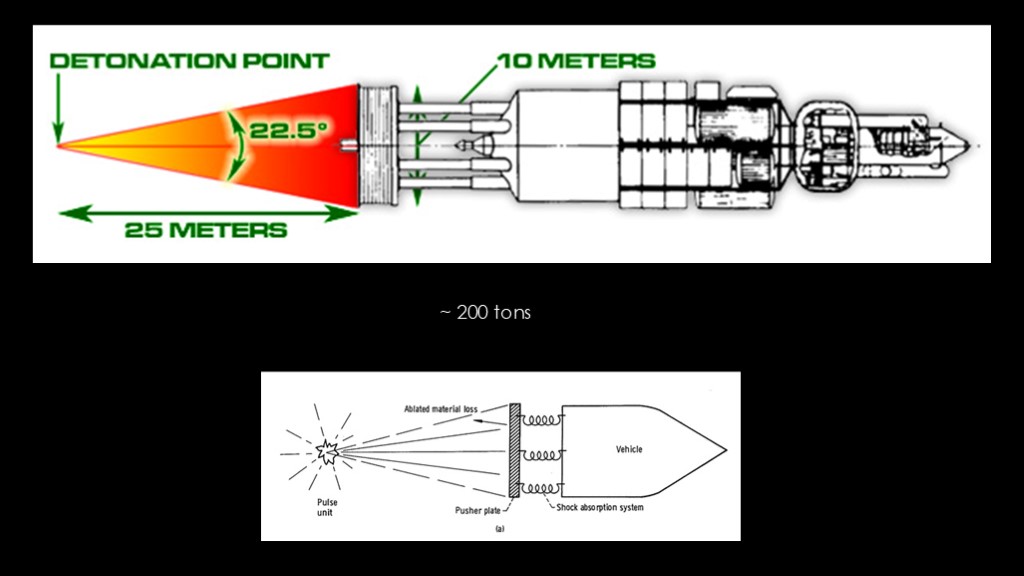
That, of course, was a very small prototype test.
What we need is a reasonably-sized vehicle, like this one, one that could carry a healthy amount of payload. Total mass is about 200 tons.
And we will of course need a more powerful pulse unit.
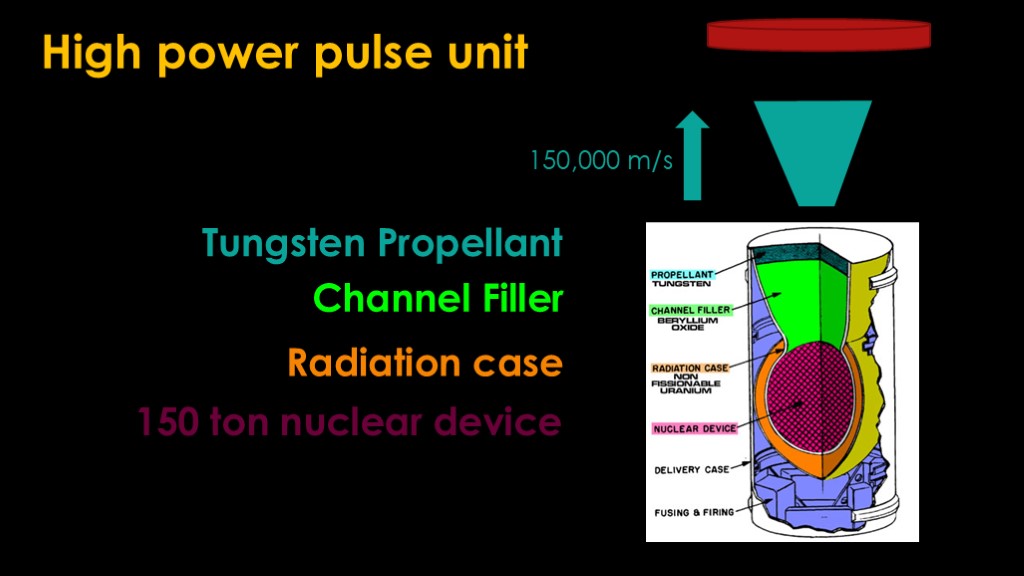
We start with a very small nuclear device, only 150 tons of yield.
We surround the device with a radiation case made of uranium 238, otherwise known as non-fissionable uranium. The purpose of the case is to take the xrays that are created by the nuclear explosion and channel them upwards.
Above that, we have the channel filler made of beryllium oxide. It will absorb the x rays and convert them to heat.
And finally at the top there's a disc of tungsten. The immense heat melts the tungsten and generates a big spray of extremely high-velocity tungsten travelling upwards at speeds in excess of 150,000 meters per second, aimed directly at the pusher plate on the bottom of the vehicle.
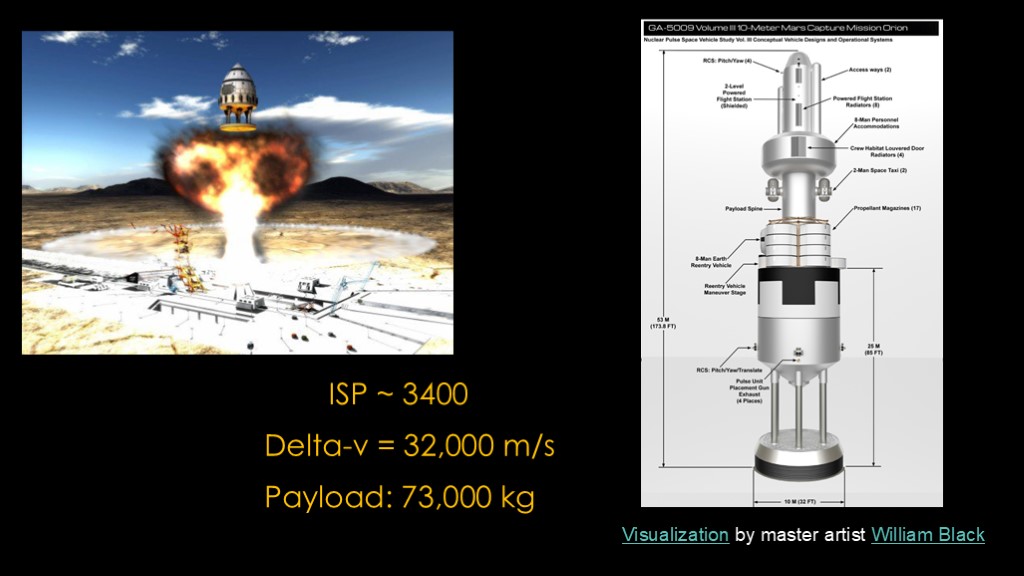
Orion is *great* at getting off the ground and into orbit, as the atmosphere enhances the propulsive effects.
This is the US Air force 10 meter Mars mission Orion. It has an ISP of around 3400, a delta-v of 32,000 meters per second, and a payload of 73,000 kg.
It can go from the earth's surface to mars orbit and back to LEO in a single stage. Easily.
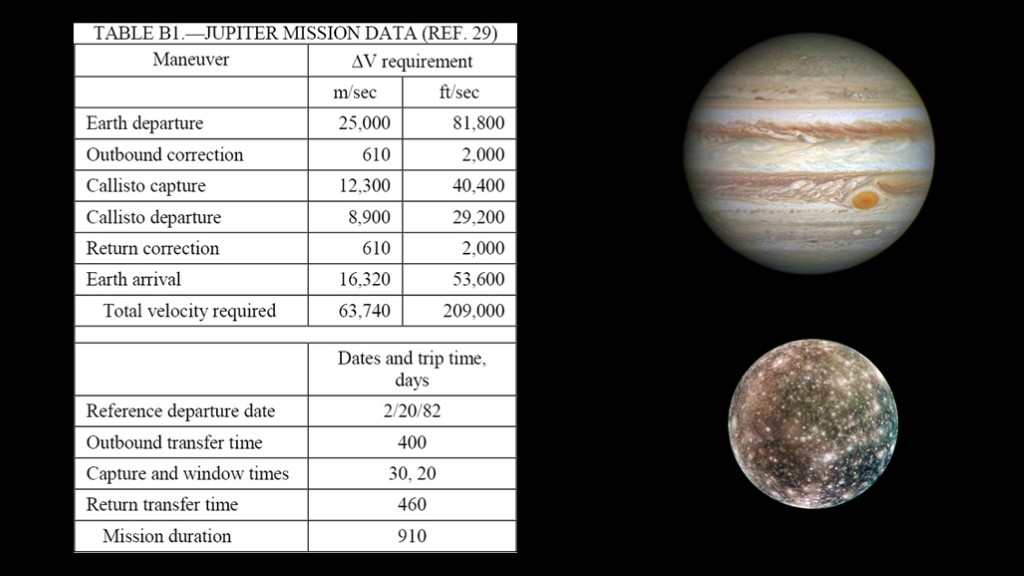
You can even do a trip to Jupiter's moon callisto, with a total mission time of about 2.5 years.
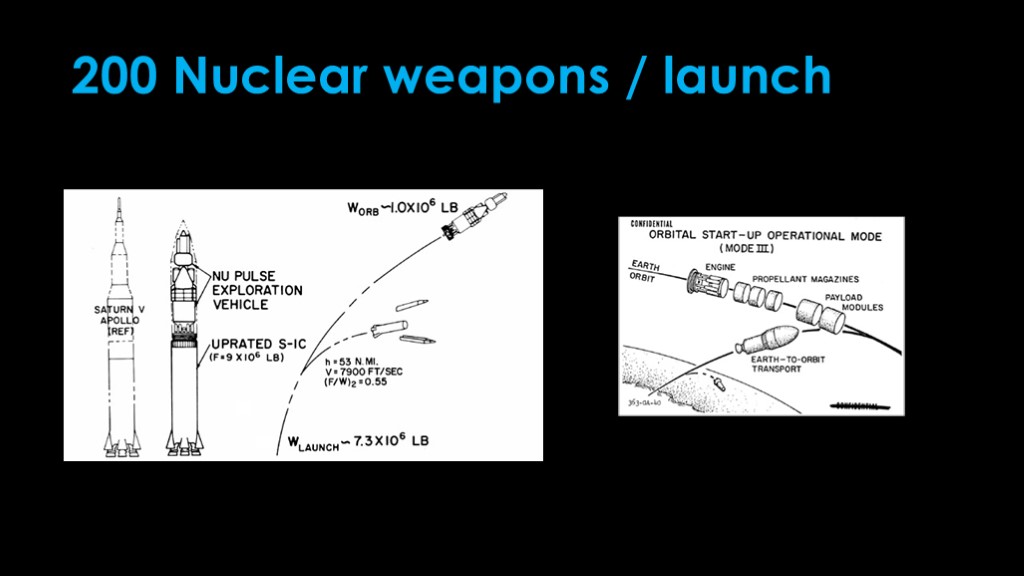
Orion did have a slight downside, the issue that launch would involve 200 nuclear weapons exploding in the atmosphere. That pretty much made it a non-starter.
There were some hybrid designs; here's one of a Saturn V first stage and an orion vehicle on top. It doesn't start using the orion drive until it reaches about 90 km in altitude.
And here's another where you would launch the Orion with traditional rockets and put it together in orbit.
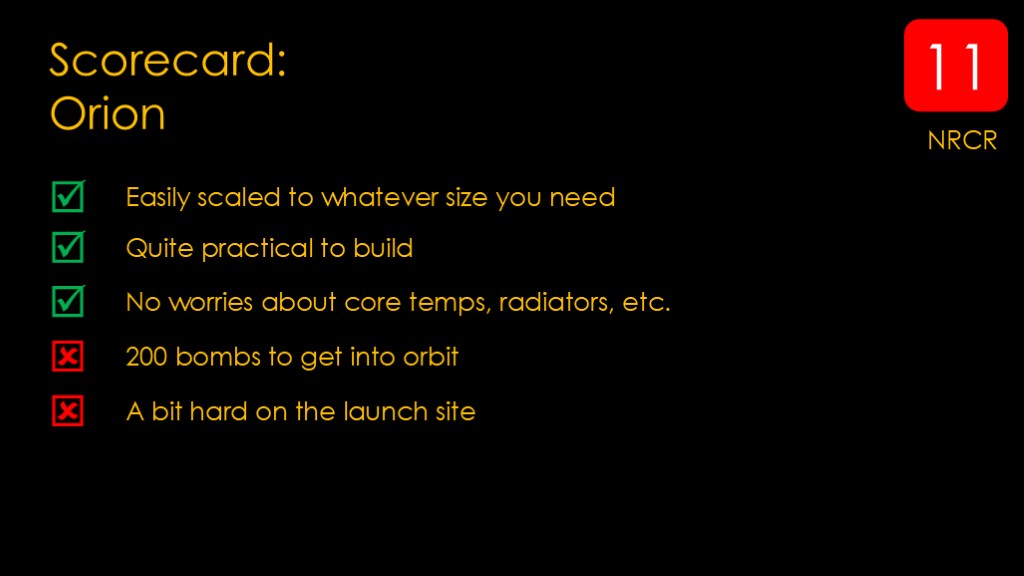
Here's a scorecard for Orion...
On the positive side, it's easily scaled to whatever size you want, and mass is not a problem, and the vehicles are quite practical to build. No worries about core temps, radiators, complex fuel designs, etc.
On the downside, 200 bombs to get into orbit is a lot of bombs, and taking off is a bit damaging to the launch site.
Orion turns the craziness score up to 11

If you enjoyed this video, please buy a nice vidalia at the market.